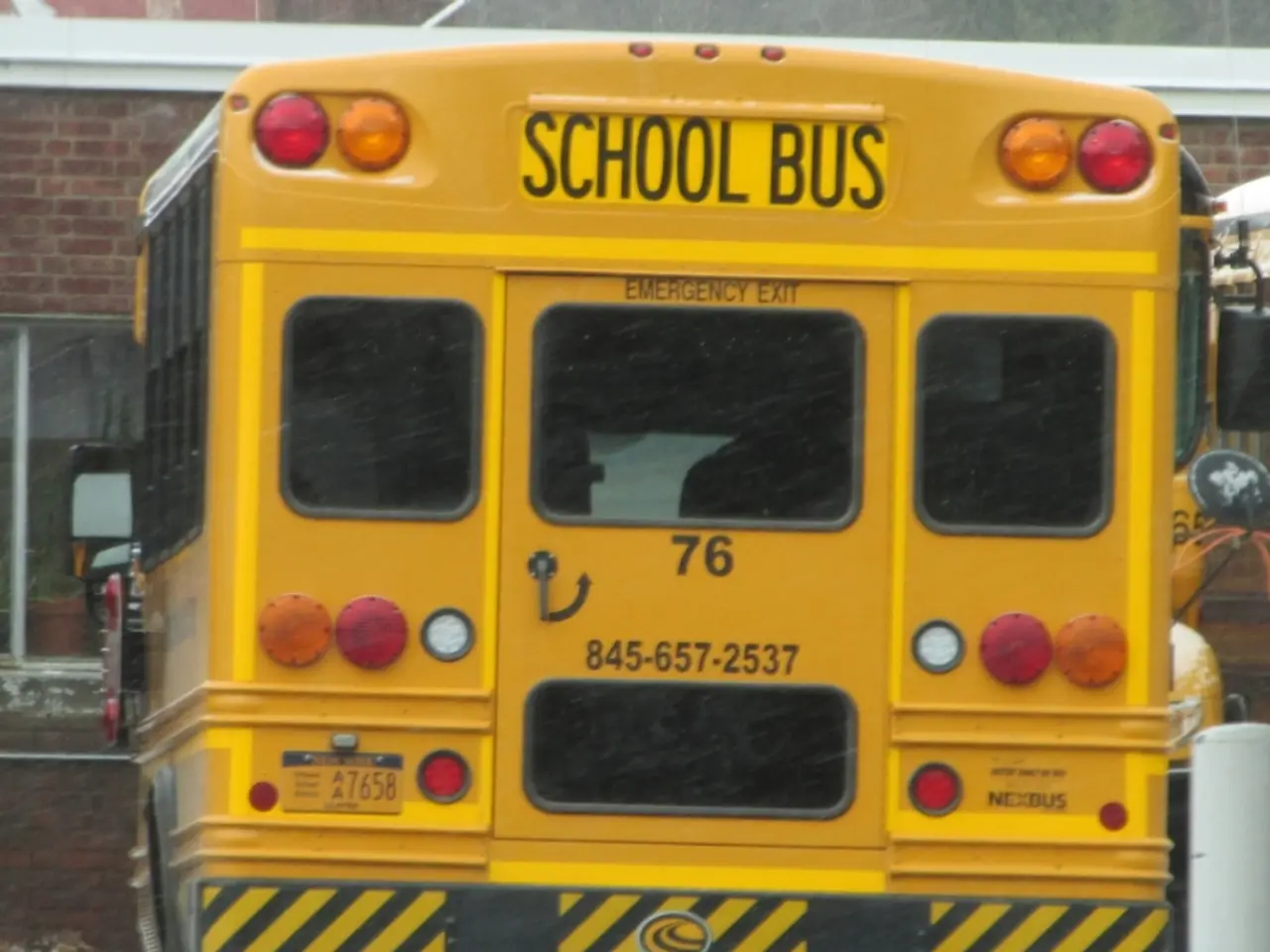Adoration for Electric School Bus: Smooth Ride, Fresh New Vehicle Aroma, and a Quiet Ambiance. No Fueling or Diesel Exhaust Fluid (DEF) Needed. Minimal Required Maintenance
In a significant shift towards cleaner, more cost-effective transportation, electric school buses (ESBs) are gaining popularity in North America. These innovative vehicles offer multiple advantages over their diesel counterparts, making them ideal for electrification.
First Student, one of the largest school bus service providers in the U.S., has committed to electrifying a significant portion of its fleet. With 450 electric buses already in operation and 1,200 more on order, the company is leading the charge towards a greener future. Manufacturers like IC Bus, Blue Bird, and Thomas Built Buses supply these ESBs, with the most common model being the Type C, which can accommodate up to 72 passengers.
The ingenious design of First Charge, a modular charging solution developed by First Student in partnership with Westinghouse, allows energy storage units to be stacked above the Power Cube. This design not only manages peak utility rates but also increases system resiliency. The modular nature of First Charge makes it especially useful for leased lots or flood-prone areas, where infrastructure needs to be flexible, movable, and even floatable in emergencies. Each First Charge unit can support up to 48 buses with Level 2 or DC fast charging, and can be easily expanded by adding more containers.
Electric school buses provide cleaner air by eliminating tailpipe emissions, improving public health. Desirie Ostby, a school bus driver, expressed her love for her ESB, stating that it drives great, has a new bus smell and feel, is quiet, and requires no fuel or DEF. School districts find electric buses to be a cost-effective investment due to lower electricity costs, reduced maintenance needs, longer brake life, and elimination of oil changes, exhaust repairs, and transmission issues.
The environmental benefits of ESBs are substantial. No diesel combustion means zero local air pollution and fewer greenhouse gas emissions. This helps improve overall air quality, especially in schools and communities. Each year, diesel buses contribute over five million tons of greenhouse gas emissions, worsening asthma and respiratory issues, especially in communities already overburdened by pollution.
Electric buses offer operational advantages as well. Drivers report that ESBs are quiet, easy to drive, and provide a smoother ride experience. They are also well suited to daily operations due to their ability to cover typical routes of 40 miles in the morning and another 40 in the afternoon.
Some electric school buses have bidirectional charging capabilities, allowing their batteries to store energy and feed it back to the power grid during peak demand or emergencies. This grid support reduces the need for additional fossil fuel power plants and costly infrastructure upgrades.
Major unions like the American Federation of Teachers and the United Auto Workers support a national transition to electric school buses, emphasizing the benefits for children's health, the climate, and the economy. With their substantial public health, environmental, operational, and economic benefits, electric school buses are a prime target for vehicle electrification programs like the EPA’s Clean School Bus Program.
The American Federation of Teachers and the United Auto Workers endorse a nationwide transition to electric school buses, highlighting advantages in children's health, climate, and economic growth. With operational benefits such as quieter operation, easy drivability, and a smoother ride, electric school buses are increasingly popular in North America. Moreover, with technological advancements, certain electric school bus models are equipped with bidirectional charging capabilities, storing energy and feeding it back to the grid during peak demand, thereby reducing the need for additional fossil fuel power plants and costly infrastructure upgrades.




